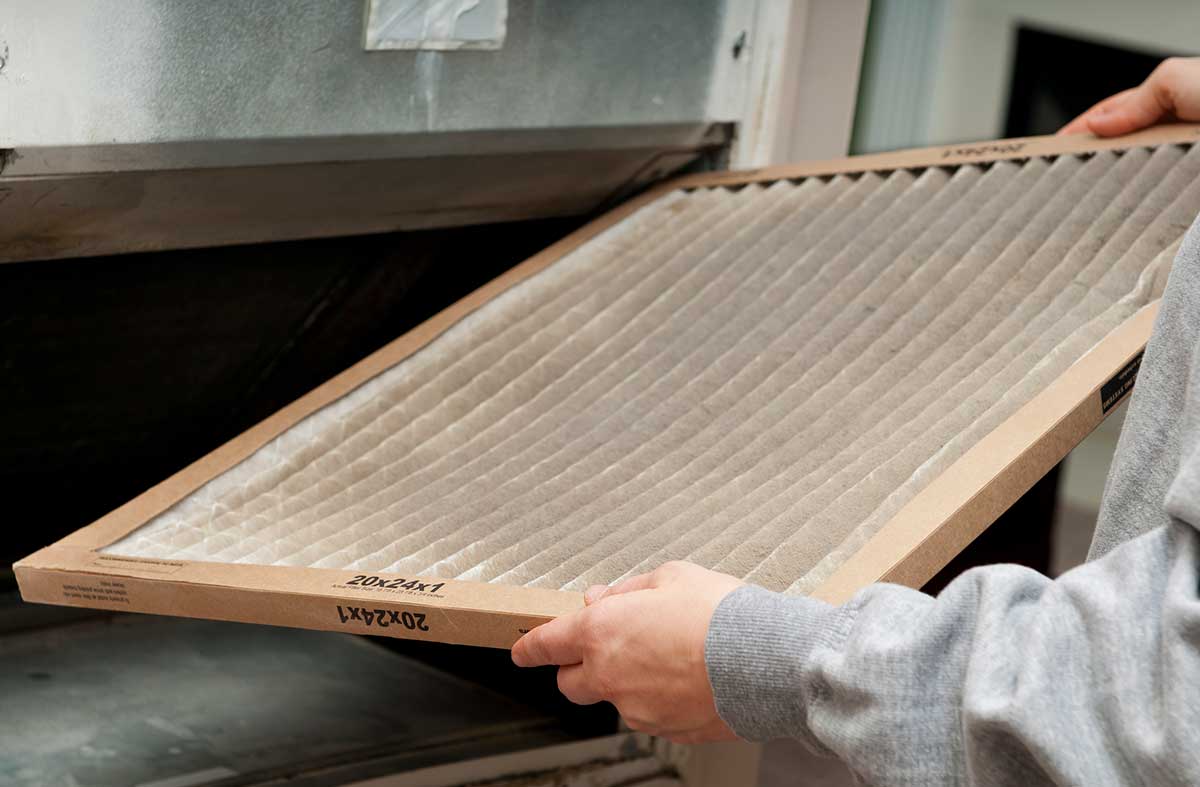
We get many questions and inquiries about A/C filters. When should I change my filters? Which filters should I use? Which filters are the best? Where do I find the odd sized filters I need? What filters will best remove the dust, allergens, odors, etc. from my house?
We have so many choices. There are fiberglass filters, foam filters, mesh filters, woven filters, pleated filters, whole house filters, electrostatic filters, electronic filters, and more – which do I choose?
We will attempt to bring some clarity to the filter situation here and answer these frequently asked questions. Let’s start with the purpose of an A/C filter. Your filter (or filters) has a two-fold purpose: 1) to filter out contaminants which become airborne in the house and to prevent them from re-circulating back into the air. 2) and very important, is to keep the indoor heat exchanger and blower assembly from getting coated or clogged with dust, dirt, hair, etc.
When these components get dirty it reduces the efficiency, capacity, dehumidification and overall performance of your A/ C and heating system and the indoor air quality as well. The more these components become compromised, the greater the probability that it will make major and expensive repairs necessary. A large percentage of major repairs are caused by neglect and inattention to proper filtration.
So first, which filters should I NOT use? Foam filters, basically the same as a very thin sponge, are okay in window/wall A/C units but should never be used in a central system. The same goes for metal mesh (similar to range hood filters) as they are intended for kitchens and used mainly to remove grease from cooking. Woven filters (often called hog hair filters) are not very effective except for large particles.
Probably still the most common filter is the 1″ fiberglass type, usually blue or grey in color. These are rated for 30 days and do a fair job of filtration. We suggest changing them when you see a light film of dust, whether it be 2 weeks, 4 weeks, or maybe longer if you have a house which is tightly sealed as many of the homes built in the last 10 years or so are. Keep in mind that pets and children tend to bring in more dust so adjust the filter changing frequency as necessary.
The next most used filter is the 1″ pleated filter, which is rapidly becoming the most popular. These are usually rated for 90 days but should be closely monitored for the dust film buildup and replacement frequency adjusted as deemed necessary. It is sometimes difficult to tell when buildup is present – we suggest comparing the backside to the dirty side and judge by the difference.
Also available are whole house pleated filters, 4 5″ thick and usually located in the indoor air handler in the attic or garage. These are a larger version of the l” and can hold large amounts of dust. They are usually rated for 3-6 months but can be good for longer under the right conditions.
The electrostatic filter is 1″ thick and usually has a metal frame with several layers of woven plastic and foam. These are very good at filtration but beware of the drag they put on the airflow of the system, which we will discuss in a minute. One advantage is they last for many years and can be washed rather than replaced.
And, of course, the best, most efficient method of filtration is the electronic filter. This must be located at the air handling unit but does the best job of cleaning the air in your home. These should be serviced every 6-12 months depending on the tightness of the house. The downside is the expense as they usually cost from $900 to $2000 depending on the brand and the application.
In conclusion, you should understand one key point regarding filters. Filters, by their very nature, inhibit air flow through the system. As a rule the better the filtration, the more it drags on the amount of air moving through the house. Having less air moving through the house is not necessarily a bad thing; it depends on the sizing of your duct system, type of equipment and other factors. It is very hard to have maximum air flow and maximum filtration and often adjustments must be made, depending on your situation.
If you have odd size filters and cannot find them, contact us.
With regard to odors in the house, we do not know of any filters which will remove odors. If you have a persisting odor problem there are ways to eliminate them but filtration alone will not.
Also, if you have excessive dust in your home and no matter how many times you change the filters it persists, please do not blame the filters. Filters are there to remove the dust but not the source. If you have excessive dust or odor problems, there are remedies available, and we can help.